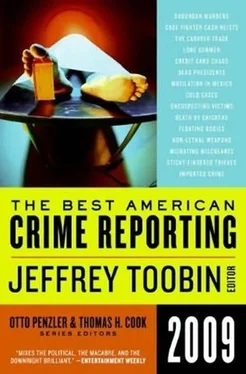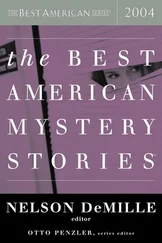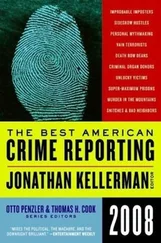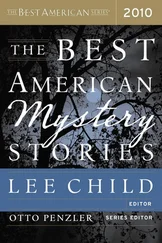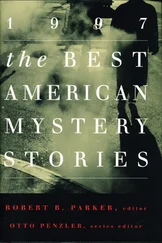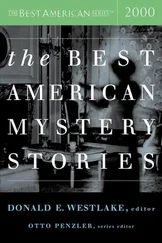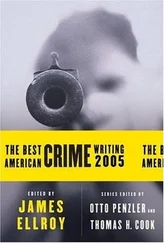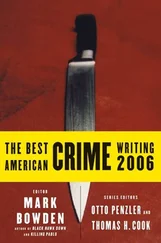In the same interview, he casually noted that he had been stabbed outside the same club a week earlier. On that occasion, he’d “only” had one of his nipples sliced off. “It was just a minor stabbing, like these things happen every night of the week,” says Andy Geer, a British promoter for Cage Rage. “He had stab wounds, bullet wounds. He was a proper from-the-streets kid.”
Three weeks after the stabbing, though covered in zippers of scars, Murray had resumed his training in the gym. But realistically, his promising career was threatened. Particularly as mixed martial arts was becoming gentrified, what promoter would permit a man with such serious injuries to fight again? What if a scar opened during a fight? Murray may have realized as much, and that could have been an incentive to turn to crime.
THE THIEVES TOOK too much money. Had the Securitas gang made off with, say, a few million pounds, it might have been one thing. But the magnitude of the heist was such that overnight it became an international cause célèbre. Even the most staid British newspapers covered the case breathlessly and exhaustively. The surveillance video from the depot was televised nationally and, inevitably, made it online. Hundreds of British policemen were immediately deployed to investigate. Hefty reward money provided an incentive to anyone with any knowledge to come forward. “The gang had no chance,” says Howard Sounes, the British author of a forthcoming book on the heist.
The suspects, though, also did plenty to hasten their demise. Mirroring Murray’s fighting career-disciplined and methodical in MMA; arrogant and unthinking in street brawls-the same thieves who had been smooth and poised in the actual pilferage could scarcely have been sloppier in the aftermath. Some gang members boasted to friends about the heist. One of the vehicles used in the crime was set afire in the middle of a field, attracting attention. The money was poorly hidden. Oceans 11 quickly devolved into a comedy of errors that recalled the Al Pacino classic Dog Day Afternoon. “That’s what happens,” says Bruce Reynolds, the convicted mastermind of Britain’s Great Train Robbery of 1963 and now something of an armchair analyst of British crime. “All the planning goes into the robbery and none goes into what happens once you have the money.”
Within 48 hours, police had made their first arrest. Acting on a tip, they apprehended Michelle Hogg, a makeup artist and the daughter of a policeman. Police found a quantity of latex they alleged Hogg had used to make prosthetic disguises for the robbers. (Under questioning, Hogg gave a statement saying she was too scared to identify the thieves.) Later that day, police found the van used to hold the Dixons. The next day, acting on another tip, they located a second van used in the robbery. When they looked inside, they found guns, ski masks, bandannas and £1.3 million in cash. Acting on still another tip the following day, police raided the homes of Murray’s pal Lea Rusha, an aspiring mixed martial arts fighter, and Rusha’s friend Jetmir Bucpapa. In Rusha’s bedroom, police found plans of the Securitas depot, and hidden in a nearby garage was £8.6 million in cash.
All told, within 10 days, five people had been charged. Millions of pounds had been recovered. And innumerable additional leads had surfaced. “A gang of misfits and bruisers pulled off the biggest robbery ever with considerable criminal aplomb,” says Sounes. “But they were also stupid. This was a brilliant caper which turned into a farce.”
The fate of the accused was sealed in the fall of 2006 when Hogg “went QE” (Queen’s Evidence), as the Brits say, and testified against her co-conspirators in exchange for her freedom. She explained how she created the disguises so the gang members who posed as police officers couldn’t be accurately identified.
On Jan. 28, 2008, after seven months of trial during which more than 200 witnesses were called, five men-including Rusha, Bucpapa and Hysenaj, the insider-were found guilty for their part in the robbery and sentenced to a total of 140 years in jail. At the sentencing, authorities urged the public to resist romanticizing the caper. Fearing for their lives after giving extensive testimony, the Dixons entered the British equivalent of witness protection. So did Hogg, the makeup artist, who, according to multiple newspaper accounts, has a £7 million bounty on her head. “This crime was, at heart, a crime of violence,” Nigel Pilkington of the Crown Prosecution Service told reporters. And with more than half the loot still unaccounted for, he vowed to continue to pursue the case. “This is not the end of the matter for these criminals,” he said. “We intend to seize their ill-gotten gains, wherever they may be.”
AS THE SECURITAS GANG was being rounded up systematically, Murray apparently did not stand idly by. He left the country, leaving his wife and two children behind. Accompanied by his friend Paul Allen-he of the infamous UFC street brawl-he drove from London to Dover. There, according to Kent police, the two piloted their car onto a ferry headed for France. Murray is believed to have then traveled from France to Amsterdam to Spain, where he and Allen crossed the Strait of Gibraltar by ferry before finally finding sanctuary in Morocco.
If Morocco has historically held a certain exotic allure for Europeans, Murray is believed to have gone there for more practical reasons. Because of his lineage on his father’s side, Murray is considered a Moroccan national. And Morocco has no formal extradition agreement with Great Britain.
By all accounts, Murray lived lavishly in Northern Africa. He, Allen and two other friends from England, Gary Armitage and Mustafa Basar, lived in a villa in Souissi, an upscale district popular with diplomats, in Morocco’s capital city, Rabat. They tooled around town in a Mercedes and spent prodigious amounts of money on clothes, jewelry, electronic equipment and jaunts to Casablanca.
After a few months, Murray reportedly spent close to $1 million on a concrete manor around the corner from a cousin of Morocco’s King, Mohammed VI, outfitting it with an additional £200,000 in upgrades that include marble floors and a fully equipped gym. He also commissioned a giant mural above the hot tub, depicting his victory in his one and only UFC fight. Allen bought a property of his own nearby.
Shortly after Murray’s arrival in Morocco in March ’06, the Kent police and Scotland Yard officials handling the investigation contacted Moroccan authorities and conveyed their concerns. Likely unbeknownst to Murray, almost from the day he arrived in the country he was under 24-hour surveillance. On June 25, 2006, dozens of Moroccan police sealed off a portion of the Mega Mall in Rabat, where Murray, Allen, Armitage and Basar were shopping. Because some of the suspects were experts in martial arts (and were potentially carrying weapons), the small army of police officers was armed. After a physical struggle, the four men were arrested. A Kent police spokeswoman asserted that Murray was arrested “for offenses linked to the £53 million Securitas raid.”
When the Moroccan police went to Murray’s residence, they found cocaine and marijuana. The four men were charged with drug possession and for violently resisting when police arrested them at the mall, a crime a Moroccan judge termed “beating and humiliating members of the security forces.” They were found guilty and in February 2007 received sentences ranging from four to eight months in prison. Armitage and Basar were released soon after for time served and retuned to the U.K. Allen was extradited by the British government and is currently in a British jail, awaiting trial for his alleged role in the heist.
Murray’s situation was somewhat more complicated. Because of his Moroccan heritage, the U.K.’s extradition request was initially denied. “The British government has been putting a lot of pressure on Morocco,” says Abdellah Benlamhidi Aissaoui, Murray’s lawyer in Morocco. “But Moroccan nationals cannot be extradited [from Morocco]. That is the law, and the law should govern.”
Читать дальше
